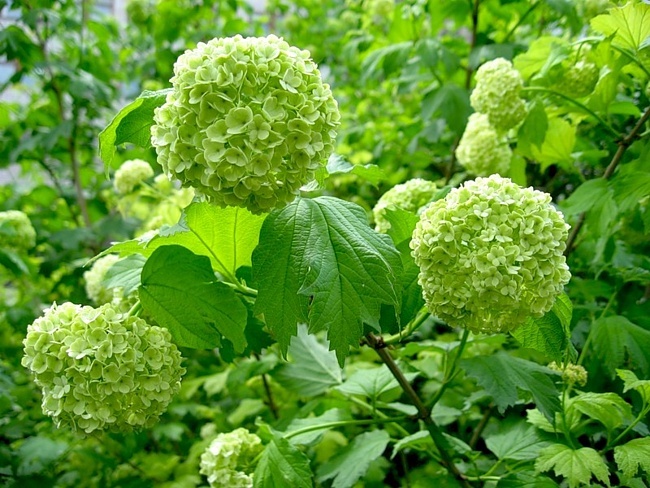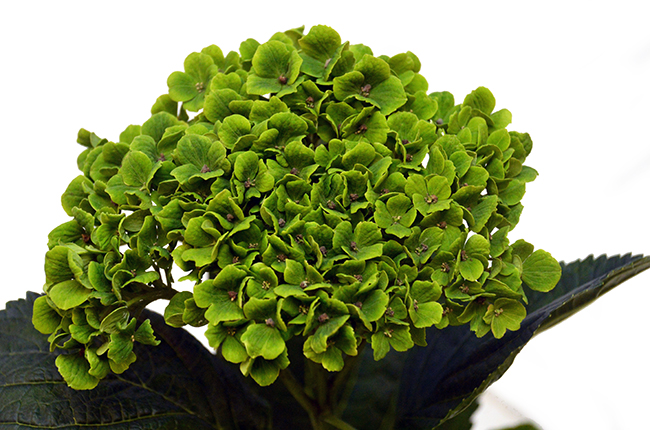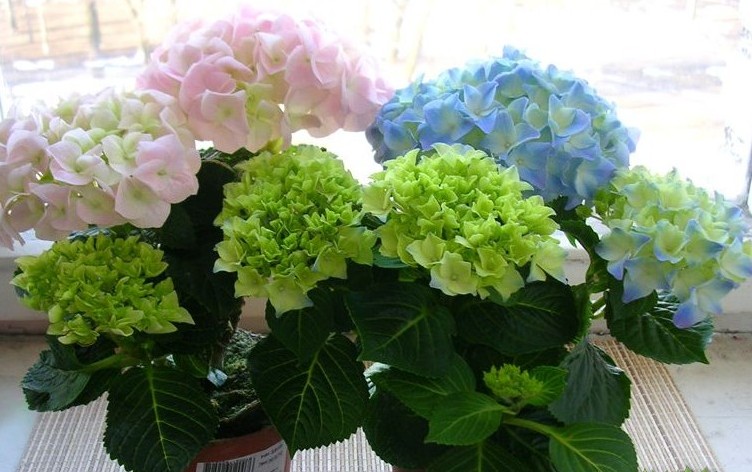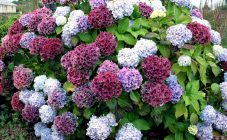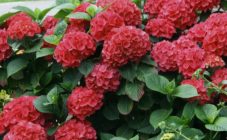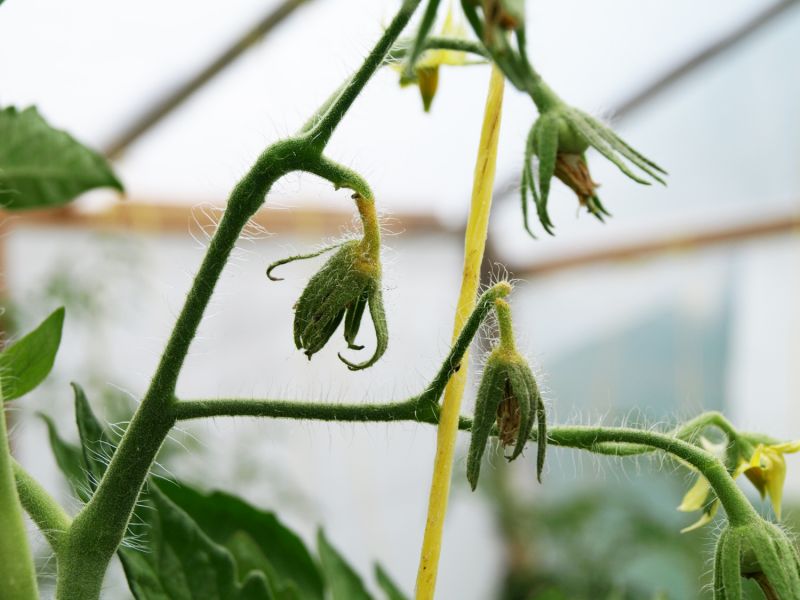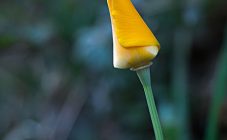Content:
Hydrangea has earned the love of gardeners for its spectacular appearance and long flowering. A perennial shrub native to Japan. Its scientific name is hydrangea, which means "vessel with water". The luxurious flower has a rich palette of colors and shades. You can decorate your garden or room with pink, white, cream, purple or blue flowers. It only happens that the flowers of a white or colored hydrangea suddenly turn green. Novice gardeners wonder why hydrangea flowers turn green.
Features of hydrangea flowering
All over the world there are up to 80 species of plants of this genus. Most often used in landscape design:
- Oak-leaved. The plant is characterized by large flowers and lobed leaves (average length 24 cm). The most popular varieties for landscaping: Burgundy - inflorescences ranging from pink to wine-red, Harmony - white inflorescences, Snow White Domes - dazzling white flowers, Tennessee Clone - light cream inflorescences, Snow Queen - snow-white flowers. The main advantage of oakleaf varieties is frost resistance. The culture is able to withstand temperatures as low as -28 degrees;
- Serrated. These are low-growing, spreading shrubs. Inflorescences reach 8 cm in diameter, the leaves are serrated. A feature of these varieties is the bright, rich colors of the inflorescences. The most famous varieties of serrated hydrangea: "Bluebird" - red, lilac inflorescences, "Vierle" - blue flowers, leaves turn burgundy or purple in autumn, "Preciosa" - inflorescences of blue, pink, greenish shades, flowers turn crimson in autumn;
- Petiolate. This type of horticultural culture is ideal for decorating arches, since it is a long (more than 20 meters) blooming liana. It is also called climbing or curly. The peculiarity of petiole is a tart aroma. Popular varieties: Miranda, Cordifolia, Petiolaris.
- Garden large-leaved. Hydrangea of this type is also called large-leaved and broad-leaved. The plant is intended for planting in open ground, characterized by globular flowers and large ovoid leaves. Culture height - not less than 130 cm. Popular varieties: "Romance", "Forever & Ever", "Red Sensation" and others.
- Paniculata. The bush reaches a height of 2.5 meters, has a dense crown. The inflorescences of this species resemble a panicle in shape, in this regard, it received this name. The culture tolerates low temperatures well. Varieties: Dysond Rouge, Vanilla Freise, Limelight.
- Treelike. This is a tall shrub up to 160 cm with small flowers in the inflorescence and oblong leaves. The most famous varieties of this type of hydrangea: Pink Anabel, Grandiflora.
In central Russia, mainly deciduous varieties are grown. Shrubs bloom with the onset of summer and finish flowering in late autumn.
Hydrangea, planted in acidic soil, will bloom bright blue, because the soil contains aluminum, which is easily absorbed by the plant.
Today, not only garden, but also indoor hydrangea varieties are popular. At home, only a large-leaved plant is grown.
More than 100 varieties of large-leaved hydrangeas are known:
- Blue varieties: Earley Blue, Ramars Mars;
- Red varieties: Red sensation, Prima;
- Varieties with pink inflorescences: Goliath, Hamburg, Europe;
- White or cream-colored varieties: Souer Tharese and Mme E. Mouillere.
Hydrangea green
Inexperienced growers get very upset and wonder why hydrangea blooms green instead of the expected white or pink.
Anyone who has already grown this flower in his garden knows that green hydrangea occurs at the beginning and at the end of flowering. This is such a cultural feature, which is why white hydrangeas turn green. In the future, the inflorescences acquire their natural color. This phenomenon is considered absolutely normal for the hydrangea tree species.
The reason why the flowers of hydrangeas turn green may be an unfortunate planting site.
The shrub should be planted in partial shade or in the shade - the bright sun causes slower plant development. In addition, it is not recommended to plant a flower under trees that absorb moisture strongly.
The soil for the crop should be moist and well-drained, and also consist of peat, leafy earth, sand and humus. There should be no lime in the soil, as the flower loves acidic soils.
Also, the cause of the greenish tint of the inflorescences may be improper care:
- Incorrect feeding. For example, in a store, a plant was fertilized with some drugs, and at home with others. This could affect him and, therefore, provoke a change in shade;
- Insufficient watering. Hydrangea is a moisture-loving plant and needs systematic watering. Lack of sufficient moisture will lead the culture to developmental disruption.
- Heavy rains. Frequent and heavy rainfall is a real disaster for horticultural crops. They wash out the macro- and microelements necessary for normal development. In this case, you need to feed the flower with special nutrients (for example, "Kemira flower").
How to change the shade of hydrangea
Chameleons are not the only ones who can change their color, adjusting to the circumstances. Plants also have such an amazing ability.
To obtain the blue color of hydrangeas, aluminum is needed. A flower can obtain this element from the soil as a result of a reaction under the influence of an acidic environment. The soil under the shrub with pink inflorescences can be acidified with citric acid, aluminum alum, then its flowers will change their shade to blue.
White varieties are not suitable for such an experiment, they will not change their color, they will not have enough pigment. This method will not work even near limestone walls or alpine hills, as they alkalize the ground.
To color the hydrangea pink, you need soil with PH = 6-6.5. This level of acidity makes the shrub feel comfortable, but it can no longer absorb aluminum. If the soil is excessively acidic, then you can achieve the desired acidity using ground limestone. The main thing is not to overdo it, as highly alkaline soil contributes to the occurrence of diseases.
A neutral pH helps the shrub to develop creamy or white flowers.
It should be noted that changing the acidity of the soil is a very long process. Pink inflorescences will not turn blue in one day or even a week. It can take a shrub a whole year to completely change its color to another.
It is possible to give the flowers light shades without much effort, but such changes will be temporary, and only the veins of the petals will be colored:
- In order for the hydrangea to acquire pink tones, it is required to water it with a pale pink solution of potassium permanganate;
- A solution of copper sulfate will color the petals in a purple tone.
Green hydrangea varieties
The question of novice florists why hydrangeas have green flowers can be answered like this - this is such a variety.
Indeed, there are hydrangeas with green inflorescences:
- The Hayes Starburst tree variety has light green spherical flowers, up to 20-25 cm in diameter;
- Sterilis is also a tree-like hydrangea species. Large inflorescences, up to 20-25 cm in diameter, at the beginning of their flowering have a greenish-white tint, then become snow-white;
- Oak-leaved hydrangea "Snowflake" - its flowers resemble snowflakes in shape. By the end of flowering, the inflorescences become red-green;
- Lamlight - paniculate beauty blooms with lemon green flowers, changing over time to milky or white. By the end of flowering, the petals become pink.
In the process of flowering, these varieties change the shades of the petals themselves without outside interference.
Interesting facts about hydrangea
Archaeologists have proven that this plant existed 40 thousand years ago.
The garden culture got its beautiful name in honor of the Roman princess Hortense. In the west, it is called "French", because Western countries first heard about this exquisite flower just during the first French expedition around the world.

